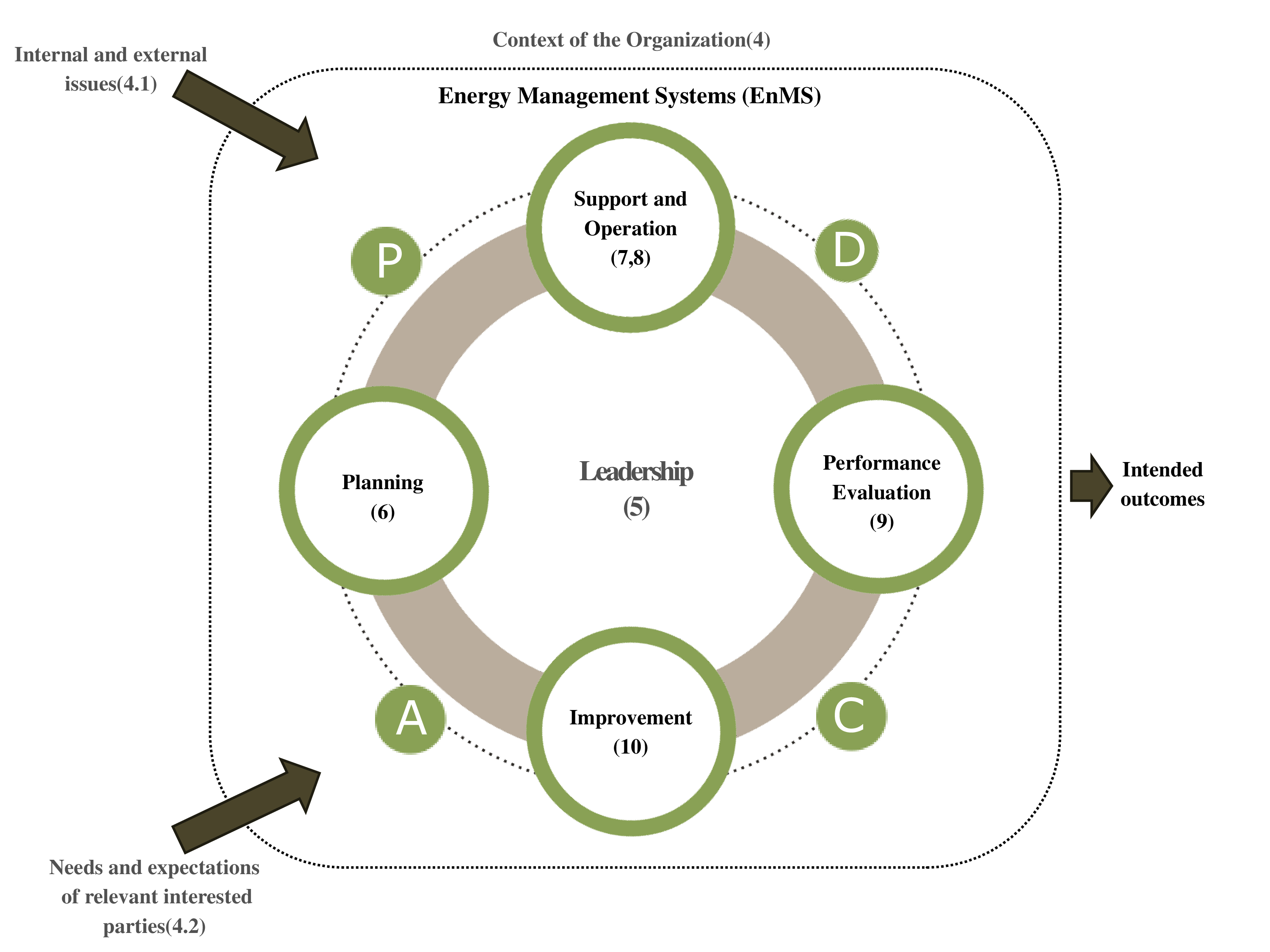
ISO 50001 is an international standard for Energy Management Systems (EnMS), providing a systematic framework for organizations to continually improve their energy performance, increase energy efficiency, and reduce energy consumption-related costs and greenhouse gas emissions.
Originally published in 2011 and revised in 2018, the updated version strengthens the strategic approach to improving energy performance.
This standard applies to all organizations regardless of size, type, or sector and is especially valuable in energy-intensive industries such as manufacturing, construction, and services.
Organizations implementing ISO 50001 can expect the following benefits:
Reduced Energy Consumption and Costs
● Optimizes energy use and eliminates inefficiencies
● Reduces energy costs and enhances organizational competitiveness
Environmental Responsibility
● Lowers greenhouse gas emissions and carbon footprint
● Improves corporate image through sustainable management practices
Compliance with Legal Requirements
● Ensures compliance with energy-related laws and regulations
● Supports global market entry through green certifications
Improved Risk Management and Emergency Preparedness
● Enhances identification and response to energy-related risks
● Establishes contingency plans for energy supply interruptions
Cultural Transformation Within the Organization
● Promotes a culture of energy efficiency
● Increases awareness of energy-saving practices organization-wide
ISO 50001 is applicable across all industries and organization sizes, and is particularly useful in the following sectors:
● Manufacturing: Improving energy efficiency in energy-intensive processes
● Construction: Optimizing energy consumption in buildings
● Services: Reducing energy use in hotels, hospitals, shopping malls, etc.
● Public Sector: Enhancing budget efficiency through energy savings
● Transportation & Logistics: Improving energy performance in vehicles, aviation, and shipping
● Energy Industry: Applicable to power plants, refineries, natural gas suppliers, and other energy producers
● Globally recognized energy management system standard
● Identifies and manages energy-related risks and opportunities
● Drives continual improvement of energy performance through the PDCA cycle
● Uses quantitative indicators to measure energy efficiency and performance
● Establishes baselines to evaluate progress and effectiveness
● Ensures compliance with energy laws and regulations, reducing regulatory risk
● Helps reduce greenhouse gas emissions through improved efficiency
● Generates direct cost savings by reducing energy consumption
● Enhances competitiveness in global markets through green certification
IISO 50001 operates based on the Plan-Do-Check-Act (PDCA) cycle.
| Phase | Key Activities |
|---|---|
| Plan | ● Establish an energy policy and analyze energy use ● Set energy objectives and develop action plans |
| Do | ● Implement energy performance improvement activities ● Provide training to relevant personnel |
| Check | ● Monitor energy performance and conduct internal audits |
| Act | ● Take corrective actions and improve the system when energy objectives are not met |

ISO 50001 is a global standard that supports organizations in systematically managing their energy use to reduce costs, improve energy efficiency, and achieve sustainable operations.
In today’s context -- where carbon emission reduction and environmentally responsible management are increasingly demanded -- this standard serves as an essential tool for advancing corporate ESG (Environmental, Social, and Governance) strategies.
Contact Person
kgb@icrqa.com
lee2750@icrqa.com